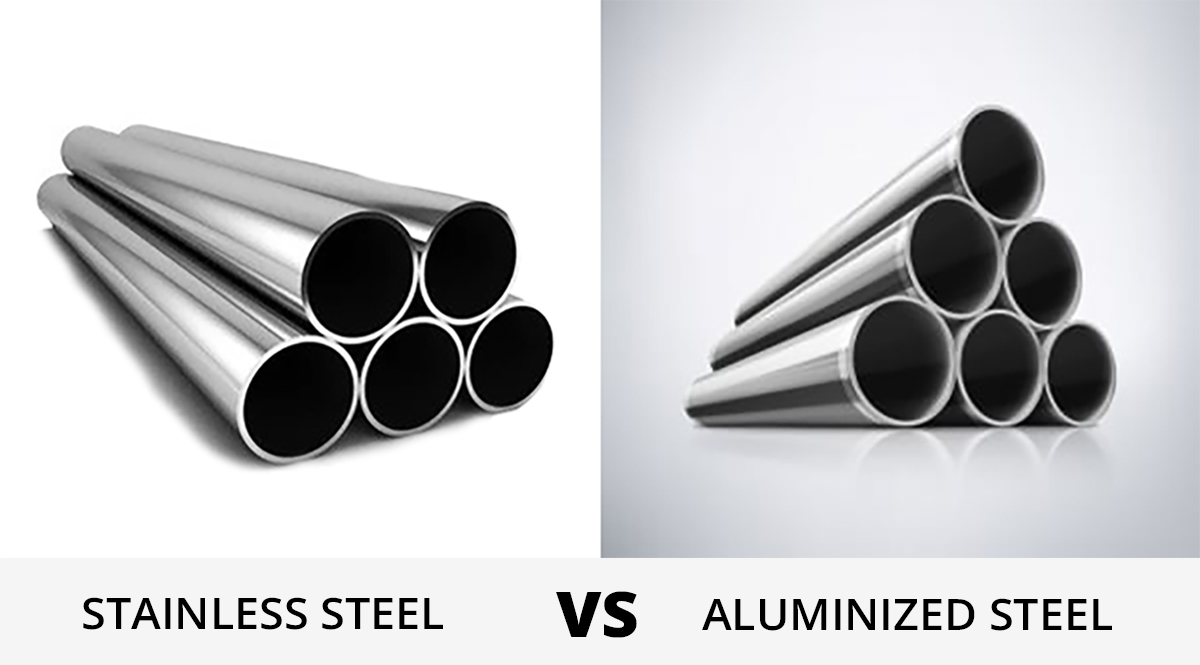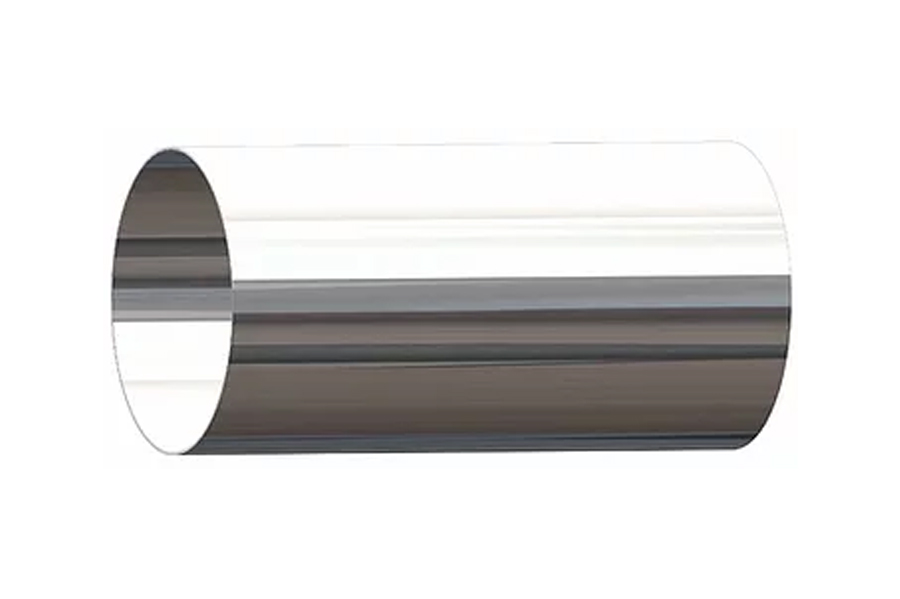Why DBA Steel Is The Real Deal
Although we specialize in aluminized steel exhaust systems, DBA Silencing offers its customers hundreds of different components. These components are manufactured from an assortment of different materials. Our hump hoses, for instance, are rubber. Our wheel motor covers, meanwhile, are fashioned from heavy-duty polyethylene plastic. The vast majority of our products, however, are made of steel.
As you are no doubt aware, there are numerous types of steel available. At DBA, we mostly use aluminized steel. That said, industry demand for stainless steel is increasing, and we’re more than happy to provide stainless steel exhaust systems or individual SS exhaust parts for clients who require them.
This post will focus on the materials we use to put together our products, and we’ll begin by taking a look at the various steel options that are out there.
Steels Suitable For Exhaust
Iron is of course an element, the fourth most common element in the Earth’s crust. Because of this abundance, iron is the cheapest metal and one of the most widely utilized. Raw iron is soft and prone to rusting, however, and so it can’t be used for applications like exhaust. It’s generally combined with other substances to produce alloys such as cast iron. When making steel, carbon is added to iron in order to improve characteristics such as strength and fracture resistance.
BLACK STEEL
Many mining truck companies use black steel for their OEM exhaust systems. Black steel has a coating of dark-coloured iron oxide on its surface; hence the name. This thin layer of iron oxide is created by the high temperatures employed during the manufacturing process, and it acts as a barrier to additional corrosion by preventing oxygen from reaching the steel of the tubing. Black steel exhaust tubing is often treated with an oily rust-inhibitor to further combat corrosion.
ALUMINIZED STEEL
At DBA Silencing, we use aluminized steel tubing ranging in diameter from three inches to 12 inches. Our exhaust piping, which we source from select mills in Canada and the US, is coated both internally and externally with an aluminum-silicon alloy. The process by which this coating is applied creates a tight metallurgical bond between the steel and the layer of aluminum, producing a material with an array of desirable properties not seen in the steel or the aluminum on their own. These attributes include strength, corrosion resistance, and heat reflectivity. As you can imagine, all three of these traits are useful when it comes to crafting aluminized steel exhaust systems that exceed the expectations of our corporate clients.
STAINLESS STEEL
Most of the stainless steel tubing we use at DBA is 8”, 10”, or 12”. Of all the iron alloys, stainless steel is perhaps the least likely to succumb to corrosion. This is because SS contains a minimum of 12% chromium and, through a mechanism called passivation, chromium forms an inert protective layer that renders stainless steel relatively unaffected by its environment. All of the aluminized steel exhaust systems offered by DBA can be turned into stainless steel exhaust systems instead.
Why Choose Aluminized Steel Exhaust Systems?
DBA Silencing has been making aluminized steel exhaust systems for decades, and there are a number of reasons that aluminized steel has historically been our material of choice.
- Aluminized steel typically has three layers: a steel core, an intermediate layer of aluminum with silicone, and a surface layer of aluminum oxide. The two outer layers prevent oxygen from penetrating to the core. And because aluminized steel corrodes much more slowly than other iron alloys, aluminized steel exhaust systems tend to last longer in the field. The longer our aluminized steel exhaust systems last, the less maintenance downtime for our customers.
- While black steel is also rust-resistant and is appropriate for exhaust components, its surface is often oily. This makes it more difficult to work with: to weld, to paint, and so on.
- Aluminized steel handles heat well. It can maintain its strength at temperatures up to 677 ℃ {1,251 ℉}. Aluminized steel exhaust systems actually have a greater electrostatic surface than stainless steel exhaust systems, and at temperatures up to 842 ℃ {1,548 ℉} they can reflect as much as 80% of the heat projected onto them.
- It has an excellent strength to weight ratio. We often find that OEM exhaust systems are heavier than they need to be, and this can lead to a variety of issues. Generally speaking, we aim to produce parts that are durable but manageably lightweight.
- Aluminized steel is cost-effective. It’s as strong as iron alloys containing expensive additions such as nickel, titanium, and tungsten, but can be obtained for a fraction of the price. Mine sites that outfit their trucks with DBA’s aluminized steel exhaust systems tend to see significant improvements in their bottom lines. The same is true for our stainless steel exhaust systems.
The Shift To Stainless Steel Exhaust
Although DBA has historically shipped parts fashioned from aluminized steel, we do anticipate a growing need for stainless steel exhaust systems and individual stainless steel exhaust components. This is partly because many new mining truck engines are equipped with SCR. Selective Catalytic Reduction is an advanced exhaust control technology that reduces tailpipe emissions of nitrogen oxides down to near-zero levels in diesel-powered vehicles. SCR systems employ DEF, or Diesel Exhaust Fluid, which is a non-toxic liquid composed of purified water and aqueous urea.
The US Environmental Protection Agency now requires that vehicles comply with its fourth generation, or Tier 4, exhaust emissions standards. SCR systems are designed to operate within the Tier 4 exhaust parameters. This makes them gentle on the environment. They are, at the same time, hard on the exhaust tubing that carries the DEF. It is for this reason that many mining truck manufacturers insist on stainless steel exhaust systems when running engines with SCR; while black steel and aluminized steel are corrosion resistant, stainless steel is the gold standard in this regard.
There are, of course, many different types of stainless steel. The three primary categories are austenitic, ferritic, and martensitic. Within each of these categories, there’s a range of stainless steel grades. At DBA, we use SS alloy 409 in our stainless steel exhaust systems. This is a ferritic SS used primarily in high-temperature situations. It handles heat extremely well; in fact, during continuous use it’s resistant to scaling {or oxide formation} up to 675 ℃ {1,247 ℉}. Perfect, in other words, for exhaust.
Stainless Steel Exhaust Available
As this article makes clear, top-quality products require top-quality materials. DBA Silencing uses premium steel piping manufactured by trusted suppliers. We are careful to select the most suitable iron alloy for any given application, thus saving our customers money in the long-term as well as the short-term. As mentioned above, we have traditionally produced aluminized steel exhaust systems; we’re more than happy, however, to manufacture stainless steel exhaust systems upon request. If you’d like to learn more about the various parts that we make with aluminized and stainless steel, please check out our website or our catalogue. And if you have questions about any of our materials, we can be reached at 1-800-661-5886 or [email protected].


